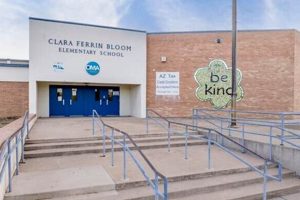Annual thematic focuses for primary education provide a framework for curriculum development, classroom activities, and school-wide events. For example, a focus on “kindness” could involve character-building lessons, community service projects, and literature emphasizing empathy. These focuses often tie together various subjects, creating a cohesive and engaging learning experience for young students.
Providing a central idea throughout the academic year offers several advantages. A unifying concept enhances learning by connecting different subjects, making the curriculum more meaningful and memorable. It also fosters a positive school culture, creating a shared sense of purpose and community among students, teachers, and staff. Historically, structured thematic approaches have evolved alongside broader educational reforms, reflecting changing societal values and pedagogical understanding of child development.
The following sections will explore various practical approaches for selecting and implementing effective annual thematic focuses, including considerations for curriculum alignment, community involvement, and student engagement.
Tips for Implementing Annual Thematic Focuses in Elementary Schools
Effective implementation of annual thematic focuses requires careful planning and consideration. The following tips offer guidance for maximizing the impact of these focuses on student learning and school culture.
Tip 1: Align with Curriculum Standards: Ensure the chosen theme aligns with existing curriculum standards. This integration strengthens academic learning while reinforcing the thematic focus.
Tip 2: Involve the School Community: Engage teachers, staff, parents, and even local community members in the theme selection and implementation process. This collaborative approach fosters a sense of ownership and shared purpose.
Tip 3: Choose Age-Appropriate Themes: Select themes that resonate with the developmental stage of elementary students. Consider their interests, learning styles, and social-emotional needs.
Tip 4: Incorporate Various Learning Activities: Use diverse instructional methods, including hands-on projects, group work, and creative expression, to explore the theme across different subjects.
Tip 5: Promote Student Leadership: Empower students to take an active role in planning and implementing theme-related activities. This fosters student agency and strengthens their connection to the theme.
Tip 6: Regularly Assess and Adapt: Monitor the effectiveness of the thematic focus throughout the year. Gather feedback from teachers, students, and parents to make necessary adjustments and ensure continued engagement.
Tip 7: Celebrate Successes: Acknowledge and celebrate student achievements and community involvement related to the theme. This reinforces positive behaviors and strengthens the overall impact of the chosen focus.
By following these tips, educational institutions can effectively leverage annual thematic focuses to enrich the learning experience, foster a positive school environment, and promote student growth.
In conclusion, thoughtfully implemented annual thematic focuses offer significant benefits for elementary schools. Further exploration of specific theme examples and case studies will provide additional insights and practical guidance.
1. Curriculum Integration
Curriculum integration serves as a cornerstone of successful annual thematic focuses in elementary education. A cohesive theme woven throughout different subjects creates a more meaningful and engaging learning experience. This interconnectedness reinforces learning by allowing students to explore the theme from multiple perspectives. For example, a theme of “sustainability” could be integrated into science lessons on ecosystems, math lessons on resource allocation, and language arts lessons on persuasive writing about environmental issues. This approach not only strengthens academic understanding but also demonstrates the practical relevance of each subject.
Effective curriculum integration requires careful planning and collaboration among educators. Teachers must identify clear learning objectives within each subject area that align with the overarching theme. Developing interdisciplinary projects and activities allows students to apply their knowledge and skills in authentic contexts. For instance, students exploring the “sustainability” theme could design and build a model of a sustainable community, incorporating mathematical principles for resource management and scientific understanding of ecological balance. Such projects deepen student engagement and promote higher-order thinking skills.
Successfully integrating a year-long theme into the curriculum strengthens thematic understanding, promotes student engagement, and fosters a cohesive learning environment. While careful planning and collaboration are crucial, the resulting benefits for student learning and school culture significantly outweigh the challenges. This interconnected approach to learning ultimately equips students with a more holistic and applicable understanding of the chosen theme and its real-world implications.
2. Community Involvement
Engaging the broader community in annual thematic focuses significantly enhances the educational experience for elementary students. This involvement creates a bridge between classroom learning and real-world applications, enriching the thematic focus and fostering a sense of shared purpose.
- Guest Speakers and Experts:
Inviting local professionals, artisans, or community leaders whose work relates to the annual theme provides students with firsthand insights and practical examples. A theme focused on “innovation” could involve presentations from local entrepreneurs or engineers. These interactions expose students to diverse career paths and demonstrate the relevance of their learning beyond the classroom.
- Field Trips and Community Exploration:
Connecting classroom learning with community resources through field trips expands the educational landscape. A theme of “local history” could involve visits to historical sites, museums, or local archives. These experiences provide authentic learning opportunities and strengthen students’ connection to their community.
- Service-Learning Projects:
Engaging students in service-learning projects related to the annual theme fosters civic responsibility and provides opportunities to apply their knowledge and skills in meaningful ways. A theme of “environmental stewardship” could involve community clean-up initiatives or projects to promote local biodiversity. Such experiences develop empathy and empower students to become active contributors to their community.
- Family and Community Events:
Organizing school-wide events centered around the annual theme creates opportunities for families and community members to participate in the educational process. A theme of “arts and culture” could involve a community art showcase or a multicultural festival. These events foster a sense of belonging and celebrate the diverse talents and perspectives within the community.
Integrating these facets of community involvement strengthens the impact of annual thematic focuses in elementary schools. By connecting classroom learning with real-world experiences and community resources, students gain a deeper understanding of the chosen theme and develop a stronger sense of civic engagement. This collaborative approach enriches the educational experience for all stakeholders, fostering a vibrant and interconnected learning community.
3. Developmental Appropriateness
Selecting developmentally appropriate annual themes is crucial for maximizing student engagement and learning in elementary education. Themes must align with students’ cognitive, social-emotional, and physical development to ensure relevance and accessibility. A mismatch between theme and developmental stage can lead to disengagement and hinder meaningful learning.
- Cognitive Development:
Themes should challenge students intellectually while remaining within their cognitive grasp. For younger elementary students, concrete themes like “animals” or “community helpers” are more accessible than abstract concepts like “justice” or “globalization.” As students progress through elementary grades, themes can increase in complexity, allowing for more nuanced exploration.
- Social-Emotional Development:
Themes can be leveraged to support social-emotional learning. Themes promoting empathy, cooperation, and conflict resolution, such as “friendship” or “kindness,” provide opportunities for students to develop crucial social-emotional skills. Age-appropriate exploration of these themes helps students navigate social interactions and build positive relationships.
- Physical Development:
Considering students’ physical abilities and limitations is important when selecting and implementing themes. Themes incorporating movement, hands-on activities, and creative expression, such as “the arts” or “sports and games,” cater to students’ physical needs and allow for varied learning experiences. Adapting activities within a theme to different skill levels ensures inclusivity and allows all students to participate fully.
- Differentiation and Inclusivity:
Developmentally appropriate themes must also consider the diverse needs of learners within a classroom. While a general theme provides a unifying focus, activities and learning experiences must be differentiated to accommodate varying learning styles, abilities, and backgrounds. This ensures that all students can access and benefit from the chosen theme.
By aligning annual themes with developmental appropriateness, elementary schools create a learning environment that fosters intellectual curiosity, social-emotional growth, and physical well-being. This thoughtful approach ensures that themes resonate with students, promoting meaningful engagement and maximizing learning outcomes. A developmentally appropriate theme becomes a powerful tool for supporting holistic child development and creating a positive school culture.
4. Varied Learning Activities
Employing diverse learning activities is essential for maximizing the effectiveness of annual themes in elementary education. A varied approach caters to different learning styles, maintains student engagement, and allows for deeper exploration of the chosen theme. Presenting information and providing learning opportunities through multiple modalities ensures that all students can access and benefit from the thematic focus.
- Hands-on Projects:
Engaging students in hands-on projects related to the annual theme provides opportunities to apply learned concepts in tangible ways. For a theme centered on “simple machines,” students might design and build their own levers and pulleys. These projects develop problem-solving skills and deepen understanding through practical application.
- Creative Expression:
Incorporating artistic activities like drawing, painting, music, and dramatic play allows students to express their understanding of the theme creatively. With a theme of “community,” students could create murals depicting different aspects of community life or write and perform skits showcasing community values. Creative expression nurtures imagination and provides alternative avenues for demonstrating learning.
- Collaborative Learning:
Group projects and discussions promote teamwork and communication skills while deepening thematic understanding. Exploring a theme of “ancient civilizations” could involve students working collaboratively to research and present information about a specific civilization. Collaborative learning fosters social interaction and exposes students to diverse perspectives.
- Technology Integration:
Utilizing technology tools like educational apps, online simulations, and interactive whiteboards enhances engagement and provides access to a wider range of resources. For a theme of “space exploration,” students could use virtual reality to explore the solar system or create digital presentations about different planets. Technology integration expands learning opportunities and prepares students for a digitally driven world.
Integrating these varied learning activities ensures that annual themes provide enriching and accessible learning experiences for all elementary students. By catering to diverse learning styles and offering multiple avenues for exploration, educators can maximize the impact of the chosen theme and foster a vibrant, engaging learning environment.
5. Student Leadership Opportunities
Cultivating student leadership within the framework of annual themes offers significant benefits for elementary education. Empowering students to take ownership of theme-related activities fosters a deeper sense of engagement, strengthens their connection to the school community, and develops crucial leadership skills.
- Planning and Implementation:
Involving students in the planning and implementation of theme-related activities provides valuable leadership experience. Students can contribute to brainstorming ideas, organizing events, and creating materials. For a theme focused on “healthy living,” students might help plan a school-wide health fair, design posters promoting healthy habits, or lead workshops on nutritious snack choices. This involvement develops organizational skills, decision-making abilities, and a sense of responsibility.
- Mentorship and Peer Leadership:
Assigning leadership roles within theme-related activities allows older elementary students to mentor younger peers. For a theme of “literacy,” older students could lead reading groups for younger students, organize book drives, or create storytelling workshops. Mentorship roles develop communication skills, empathy, and a sense of responsibility towards others.
- Project Management and Problem-Solving:
Engaging students in theme-based projects that require collaboration and problem-solving fosters leadership skills. For a theme of “environmental sustainability,” students could work together to design and implement a school recycling program, research and present solutions for reducing waste, or organize a community cleanup initiative. These experiences develop critical thinking, teamwork, and project management skills.
- Communication and Advocacy:
Providing opportunities for students to communicate and advocate for theme-related causes strengthens their leadership abilities. For a theme focused on “animal welfare,” students could research and present information about responsible pet ownership, organize fundraising events for local animal shelters, or write letters to local officials advocating for animal protection policies. These experiences develop public speaking skills, persuasive writing abilities, and a sense of civic responsibility.
Integrating student leadership opportunities within annual themes creates a more dynamic and engaging learning environment. By empowering students to take ownership of theme-related activities, schools foster the development of essential leadership skills, cultivate a stronger sense of community, and enhance the overall impact of the chosen theme on student learning and school culture.
6. Ongoing Assessment and Adaptation
Effective implementation of annual themes in elementary education necessitates ongoing assessment and adaptation. Continuous monitoring and adjustment ensure the theme remains engaging, relevant, and impactful throughout the academic year. This iterative process allows educators to respond to student needs, refine instructional strategies, and maximize the theme’s educational value.
- Data Collection and Analysis:
Regularly collecting data through various methods, such as student surveys, teacher observations, and analysis of student work, provides valuable insights into the effectiveness of the theme’s implementation. Analyzing this data reveals areas of strength and areas requiring adjustment. For instance, if student feedback indicates a lack of engagement with specific theme-related activities, educators can adapt those activities to better suit student interests and learning styles. Data-driven decision-making ensures the theme remains relevant and impactful.
- Flexibility and Responsiveness:
Maintaining flexibility in theme implementation allows educators to respond to unforeseen circumstances or evolving student needs. For example, a planned field trip related to the theme of “local ecosystems” might need to be adapted due to inclement weather. Educators could leverage online resources or create alternative classroom activities to maintain thematic focus and minimize disruption. Flexibility ensures that the theme remains adaptable to changing circumstances.
- Reflective Practice and Collaboration:
Regular reflection and collaboration among educators are crucial for ongoing assessment and adaptation. Teachers sharing observations, discussing challenges, and brainstorming solutions collectively enhance the effectiveness of the theme’s implementation. For instance, if a theme on “cultural diversity” is not resonating with certain students, teachers can collaborate to develop more culturally responsive and inclusive activities. Reflective practice ensures continuous improvement and fosters a collaborative approach to theme implementation.
- Curriculum Alignment and Modification:
Ongoing assessment may reveal the need for curriculum adjustments to better align with the chosen theme. If a theme focused on “scientific inquiry” reveals gaps in students’ understanding of specific scientific concepts, educators can modify curriculum pacing or incorporate additional resources to address those gaps. This iterative process ensures that the curriculum effectively supports the thematic focus and promotes student learning.
Ongoing assessment and adaptation are integral to successful implementation of annual themes. This iterative process, driven by data analysis, collaborative reflection, and flexible responsiveness, ensures that the chosen theme remains engaging, relevant, and impactful for all students throughout the academic year. By continuously monitoring and adjusting their approach, educators maximize the educational value of the theme and create a dynamic and responsive learning environment.
Frequently Asked Questions about Annual Themes in Elementary Education
This section addresses common inquiries regarding the implementation and benefits of annual themes in elementary schools.
Question 1: How are annual themes selected?
Theme selection often involves a collaborative process including teachers, administrators, and sometimes parent/community input. Factors considered include curriculum alignment, student interests, and school-wide goals.
Question 2: What are the benefits of using a school-wide theme?
School-wide themes provide a unifying element, connecting various subjects and creating a cohesive learning experience. They can also enhance school culture and foster a sense of community.
Question 3: How can themes be integrated into different subjects?
Themes can be integrated through interdisciplinary projects, thematic units, and activities that connect the theme to specific learning objectives within each subject area. For example, a “courage” theme could be explored through historical figures in social studies, fictional characters in literature, and scientific discoveries in science.
Question 4: How can one ensure themes are age-appropriate and engaging?
Developmental appropriateness is crucial. Themes should align with students’ cognitive, social-emotional, and physical developmental stages. Engaging themes often connect to student interests and offer opportunities for active participation.
Question 5: What if a chosen theme proves ineffective mid-year?
Ongoing assessment and adaptation are essential. If a theme isn’t resonating, adjustments can be made, incorporating feedback from teachers and students to improve engagement and relevance.
Question 6: How can parents and the community be involved with the annual theme?
Parent and community involvement can enrich thematic exploration. Schools might invite guest speakers related to the theme, organize community events, or engage families in theme-related projects and activities.
Thoughtful planning and implementation are crucial for maximizing the benefits of annual themes. Addressing these common questions helps ensure a successful and enriching experience for the entire school community.
For further information and practical examples, explore the following resources…
School Year Themes for Elementary
This exploration of annual thematic focuses in primary education has highlighted their significance in fostering cohesive learning experiences. Key elements, including curriculum integration, community involvement, developmental appropriateness, varied learning activities, student leadership opportunities, and ongoing assessment, contribute to successful implementation. These elements ensure thematic relevance, student engagement, and positive impacts on school culture.
Effective implementation requires thoughtful planning and collaborative effort. The potential of annual themes to enrich educational experiences underscores their value in shaping well-rounded learners prepared for future challenges. Continued exploration and refinement of these practices promise further advancements in elementary education.







